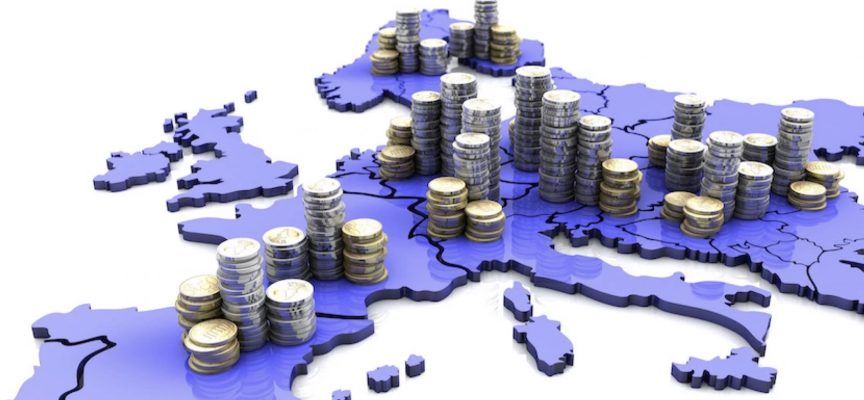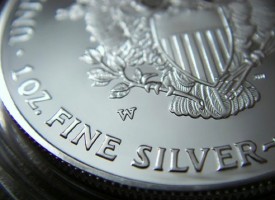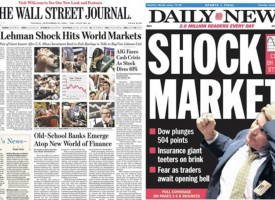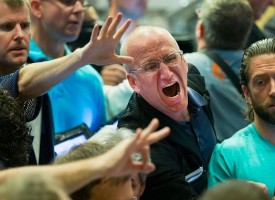If you think things are tough in the US and Asia, look at how bad the situation in Europe has become.
EURO CONTINUES ITS SLIDE AGAINST THE DOLLAR
September 13 (King World News) – Gerald Celente: Since mid-July, the euro has lost more than 5 percent of its value against the dollar, trading at $1.0703 on 9 September, on worries that the Eurozone is stumbling into recession and uncertainty over the European Central Bank’s (ECB’s) next interest rate announcement.
As we have detailed in this week’s ECONOMIC UPDATE, Germany, Europe’s largest economy and the fourth largest in the world, is on-trend for contracting this year.
Meanwhile, U.S. Federal Reserve officials have vowed to hold current high-interest rates in place at least through this year, boosting the dollar’s appeal as a store of value.
In contrast, because of Europe’s economic weakness, “there are doubts about whether the ECB can squeeze in one final [rate] hike,” Chris Turner, chief foreign currency strategist at ING, said to the Financial Times.
Another rate increase “could actually be counterproductive because if they hike into a recession, they will have to cut [the rate] much more going forward,” chief Europe economist Tomasz Wieladek at T. Rowe Price told the FT.
TREND FORECAST:
The U.S. dollar will stay king until the Federal Reserve lowers interest rates. We forecast that the euro will remain weak even when the Fed lowers interest rates since the EU economy will sink deeper into Dragflation: declining economic growth and rising inflation… which will become obvious as oil and gas prices remain at their current prices and/or move higher…
ALERT:
Powerhouse merger caught Rio Tinto’s attention and created a huge opportunity in the junior gold & silver space CLICK HERE OR ON THE IMAGE BELOW TO LEARN MORE.

EUROZONE BUSINESS ACTIVITY SLOWEST IN 33 MONTHS; CONSUMER CONFIDENCE WORSENS
The HCOB purchasing managers index (PMI), which measures business activity across the 19-country Eurozone, sank to 47 in August, its lowest in 33 months, after the ongoing slump in manufacturing was joined by an unexpected contraction in services.
Measures below 50 indicate that business activity is declining.
S&P Global’s PMI settled at 46.7, dropping from 48.6 in July and reaching its lowest point since November 2020. Economists in a Reuters poll had expected the new figure to be 48.5.
Service-sector activity fell for the first time this year and tumbled to a 30-month low, S&P noted.
Input costs continued to decline for manufacturers but rose for service providers.
S&P’s gauge of demand for services dropped from 50.9 in July to 47.9 in the month following, sinking to its deepest plunge since February 2021…
This silver explorer recently did a huge transaction with a $4.5 billion market cap producer CLICK HERE OR ON THE IMAGE BELOW TO LEARN MORE.
“For the first time in 2023, output fell in both services and manufacturing,” S&P said in a press statement. “The service sector ended a seven-month run of growth with the steepest contraction since February 2021. Goods production dropped for the fifth month running.”
Consumer confidence also sank further, settling at -16 after notching -15.1 in the previous survey. Analysts had expected the figure to go the other direction, rising to -14.3.
The confidence index averaged -9.9 in the months leading up to the COVID War.
The new figures further jumbled economists’ views of whether the European Central Bank will raise its key interest rate when its governing council meets this month.
Eurozone inflation ran at 5.3 percent in August, almost three times higher than the bank’s 2-percent target.
The European Union’s statistics office pared back its forecast for second-quarter growth from 0.2 percent to 0.1 percent.
The surprising sharp declines heightened concerns that the zone is headed into a recession.
Europe’s economy will shrink by another 0.1 percent in this quarter, the Hamburg Commercial Bank has predicted.
“Another weak PMI for the Eurozone confirms a sluggish economy with recession as a downside risk,” ING senior economist Bert Colijn wrote in a note. “Inflation pressures for services remain stubborn as wage pressures continue to be a concern.”
TREND FORECAST:
Germany, Europe’s largest economy, looks destined for a recession, as we detail in this issue.
Southern European economies have strengthened with an influx of post-COVID tourists. However, northern Europe depends more on manufacturing, which has taken second place to services and consumer experiences over the past year.
Services do not provide the same lasting, widespread economic benefits that manufacturing does.
Therefore, the continent’s diminishing manufacturing economy is likely to tumble the entire region into recession. It is increasingly likely that the recession will begin before this year is over.
ALSO JUST RELEASED: IGNORE THE VOLATILITY: 3rd Gold Secular Bull Market Close To Liftoff, But Look At Silver CLICK HERE.
ALSO JUST RELEASED: FIREWORKS IMMINENT: Look At The Mother Of All Cup & Handle Formations CLICK HERE.
ALSO JUST RELEASED: Major US Dollar Update And How It Will Impact The Gold Market CLICK HERE.
ALSO JUST RELEASED: Michael Oliver Says Silver May Be Poised For A Major Upside Breakout CLICK HERE.
ALSO RELEASED: Michael Oliver – The Action In Gold Has Already Shifted Positive Despite Volatility CLICK HERE.
© 2023 by King World News®. All Rights Reserved. This material may not be published, broadcast, rewritten, or redistributed. However, linking directly to the articles is permitted and encouraged.








